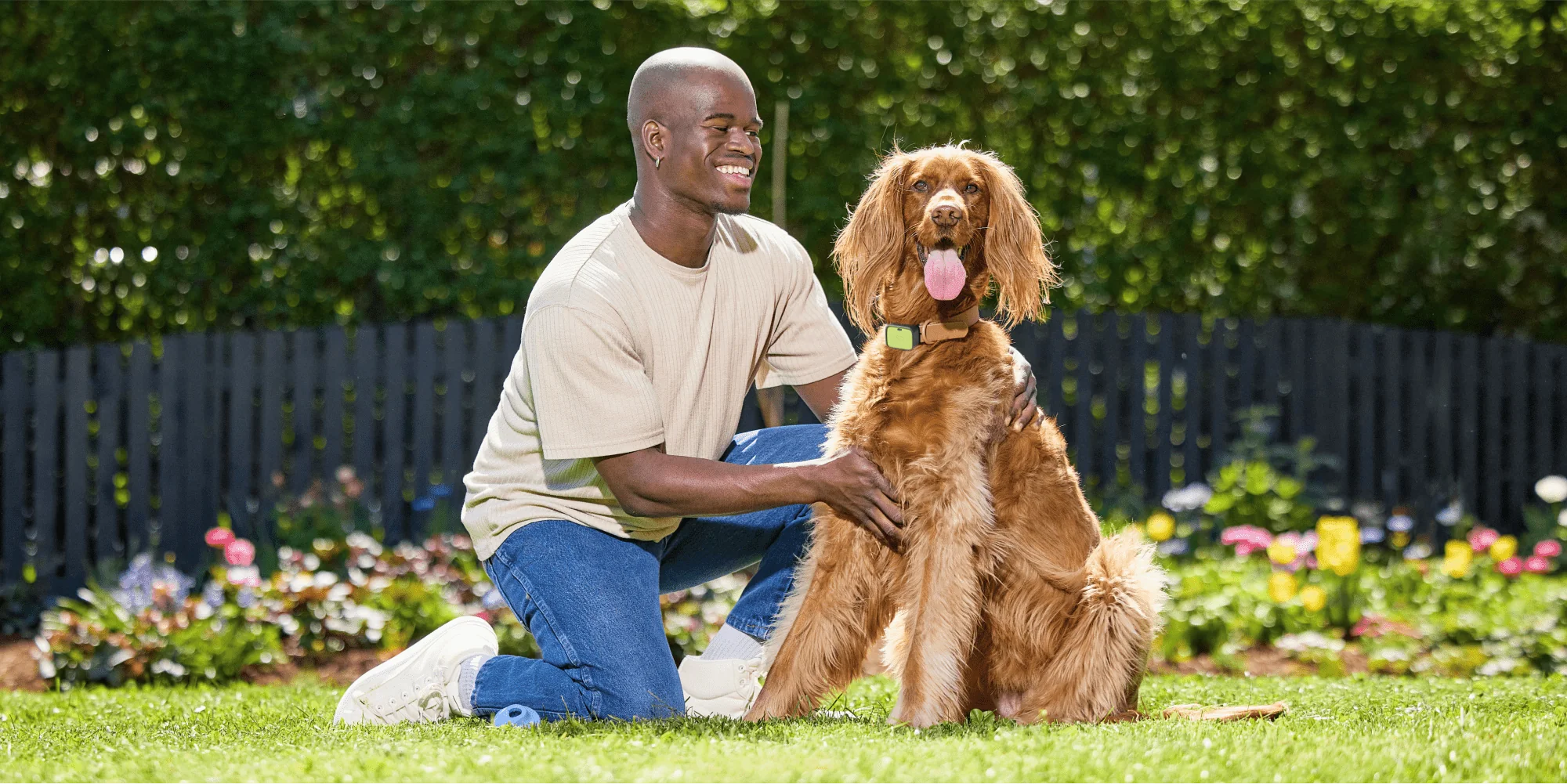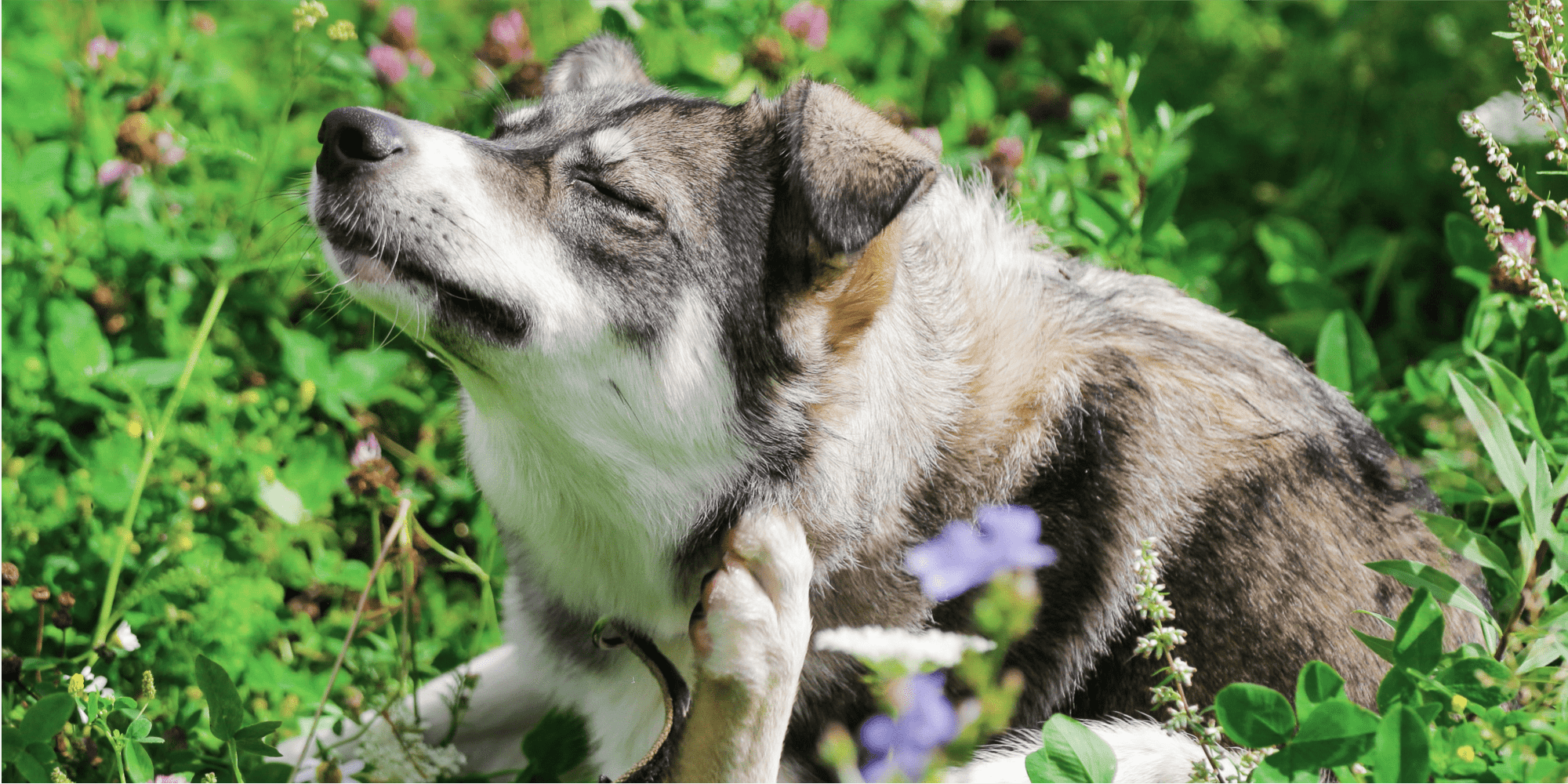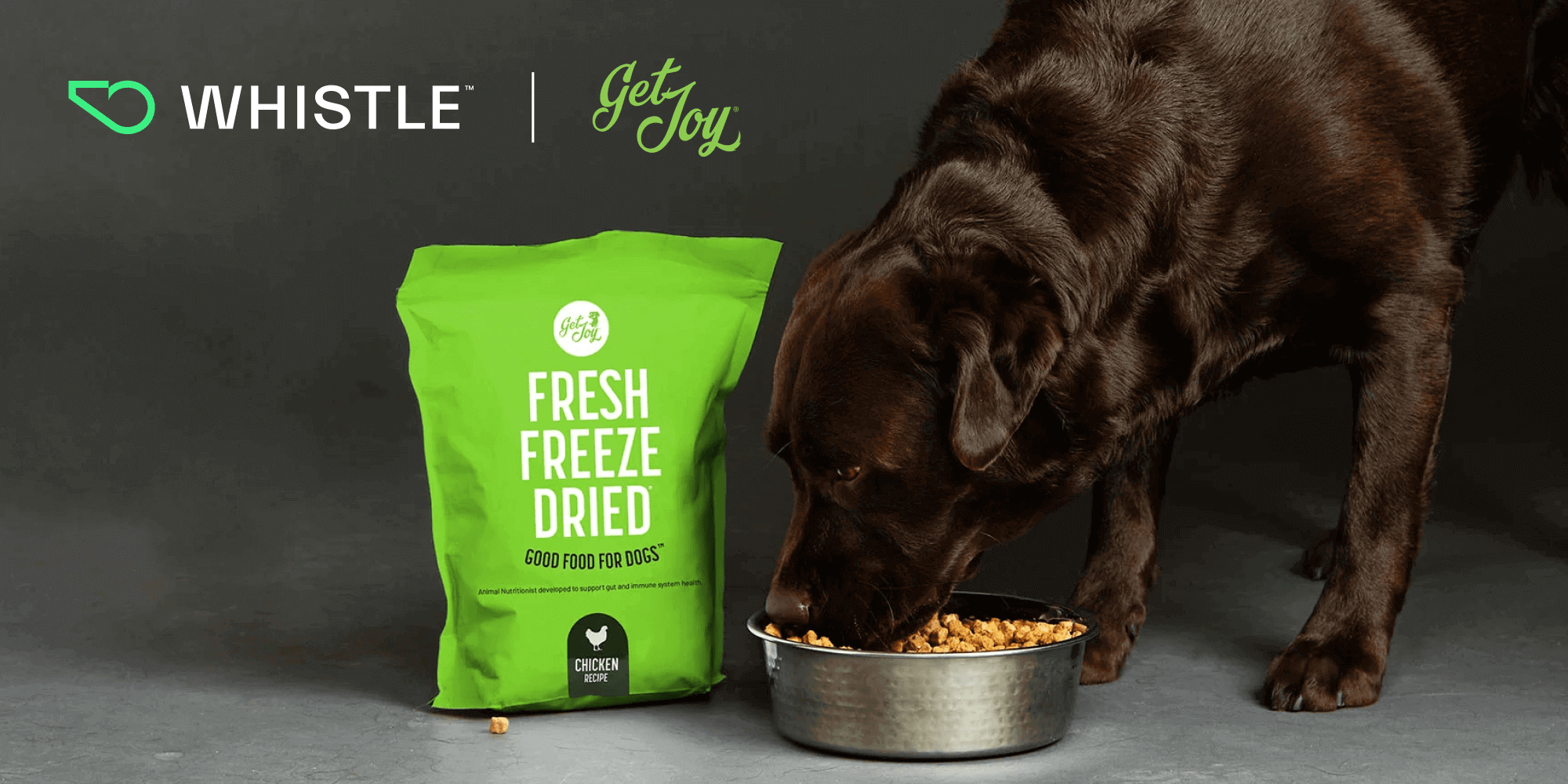Healthy Habits: How often to walk your dog?

You have to spell w-a-l-k and the seeing the leash makes your dog race to the door. Daily walks around the neighborhood are the best parts of your dog’s day and they make sure to stop and smell all of the roses (and the trees and fire hydrants) along the route.
Regular exercise is so important. Exploring the neighborhood or a favorite trail isn’t just about exercise; getting outside and smelling new things, hearing new sounds and seeing new people and pets provides benefits to your dog’s social and emotional wellbeing.
Dog Walking 101: How Much Exercise Does a Dog Need?
In general, dogs need a minimum of 30 minutes of exercise every day—but that guideline varies depending on several factors, including their age, breed and health status.
Whistle Health 2.0, GO Explore or Switch allow you to create a unique fitness plan based on your dog’s age, breed and weight. You can track calories burned, distance traveled and minutes active to make sure your dog is hitting their activity goals.
By Age: Dogs need different amounts of exercise at different life stages.
-
Puppy: Puppies love zoomies and playtime but tend to prefer shorter bursts of exercise with long naps in between.
Experts suggest that each walks should be limited to five minutes for every month of their age. It means that four-month old puppies can go for 20-minute walks while 12-month old puppies can walk for an hour.
-
Adult: Adult dogs have more energy and need less rest than puppies or senior dogs and need between 30 minutes and two hours of exercise every day, depending on their energy level.
Regular walks are a great option, but circling the block with your dog at the end of the leash is just one way to meet their exercise needs. Hiking, swimming, agility and fetch will also help your dog burn off some energy and hit their exercise goals.
-
Senior Dog: Even super active dogs tend to slow down with age. Senior dogs might not be able to keep up on strenuous hikes or play fetch for hours, but that doesn’t mean they don’t need regular exercise.
Take your senior dog on slow walks around the neighborhood and let them sniff and explore or look for low impact exercise options. Short training sessions to teach an old dog new tricks or puzzle toys that encourage your senior dog to work their body and their mind are ideal for older dogs.
By Breed: All breeds benefit from regular exercise to burn off energy, provide mental stimulation, reduce the risk of obesity, support cardiovascular health and alleviate stress. But certain breeds are more active than others. Border Collies will require more exercise than Chihuahuas, for example.
Here are five of the most active dog breeds:
- American Staffordshire Terrier
- Border Collie
- Belgian Malinois
- Dalmatian
- Redbone Coonhound
Here are five of the least active dog breeds:
- Basset Hound
- Bichon Frise
- Havanese
- Pug
- Shih Tzu
How to tell if my dog is getting too little or too much exercise?
While there are general guidelines for the amount of exercise your dog needs, there is a lot of variation depending on their age, breed and health status. It’s important to look for signs that your dog is getting the amount of exercise.
What are the signs of too little exercise?
Research found that many dogs don’t receive the amount of exercise they need. Signs that your dog isn’t getting enough exercise include:
-
Destructive behavior: Dogs that are bored or don’t have an appropriate outlet to burn off energy may start chewing on furniture or tearing things up around the house.
-
Hyperactivity: Zoomies are normal, but dogs that are racing around the house multiple times a day may need more exercise.
-
Attention seeking: Barking, whining, begging, jumping and excessive licking could be signs that your dog needs more exercise. See if a walk or short play session will help curb these behaviors.
-
Weight gain: An expanding waistline is a sure sign that your dog needs more exercise (and perhaps smaller portions at mealtime). Walking is one of the best strategies for how to help a dog lose weight.
Whistle Health 2.0, GO Explore or Switch allows you to monitor behaviors like excessive licking or sleeping could be signs that your dog is bored and needs more activity to boost their wellbeing.
What are the signs of too much exercise?
It’s important not to over exercise your dog. Overexertion could lead to health issues ranging from muscle strains or sprains and tendon or ligament injuries to heatstroke or abrasions on their paws. Watch for signs that your dog is getting too much exercise.
- Whining or struggling to keep up on a walk: When your dog starts to fall behind on a walk or whines instead of sniffing the grass and taking in their surroundings, it could be a sign of fatigue, pain or discomfort from getting too much exercise.
- Post-walk stiffness: A dog workout strains your dog’s muscles and too much exercise might be stiff afterward. Look for signs like limping, trouble going up and down the stairs or a reluctance to get up from their bed.
- Refusing to go for a walk: Dogs that are tired or sore from over-exertion might run and hide or refuse to get up from their bed when it’s time to go for a walk. A dog that doesn’t want to walk could be getting too much exercise.
Track behaviors like sleeping or activity level using Whistle Health 2.0, GO Explore or Switch. A dog that is sleeping more and moving less could be tired or sore from too much exercise. If you notice these signs, cut back on their walks use the Ask a Vet feature included with Whistle devices to rule out other possible causes of their symptoms.
What are the benefits of physical activity for dogs?
Exercise is so important for dogs of all ages and breeds and offers big benefits for their health and wellbeing.
- Health benefits like stronger muscles and bones, better heart and joint health and improved lung and organ function; daily walks also burn calories and help your dog maintain a healthy weight. Use the fitness features on the Whistle Health 2.0, GO Explore or Switch to set activity goals and monitor health to ensure your daily walks are paying off with improved health.
- Mental stimulation: Tracking your pet’s activity goals is important but exercise is about much more than counting steps. Walks are a time for your dog to explore their surroundings and take in new sights, sounds and smells that are essential for their emotional wellbeing.
- Bonding: Whether you’re playing fetch, hiking on a trail or teaching your dog a new trick, exercise a great opportunity for some one-on-one time with your four-legged best friend.
Dog Walking Tips & Tricks
Walking your dog isn’t as simple as hooking up the leash and heading out the door. These tips and tricks will make sure that your daily walks are fun and safe for you and your dog.
-
Choose the right gear: Some dogs walk well with a standard collar and leash, but a harness might be a better option for a dog that pulls because it reduces pressure on their throats. Anxious dogs and escape artists should be walked with a double leash with one leash attached to the collar and another attached to a harness to prevent them from getting loose.
Regardless of the leash/collar/harness system you choose, your dog should be wearing identification tags with your phone number. Whistle GO Explore and Switch devices also have GPS tracking capabilities, so you can locate your dog if they get loose.
- Prioritize training: Dogs need to be taught leash manners. Working with a dog trainer and providing some leash training before going for a walk can help set them up for success once you’re on route.
- Obey leash laws: Leash laws help keep your dog safe and ensures the safety of other dogs (and owners) that are out for their daily walks. Make sure you know the local laws and follow them to keep your dog safe.
- Take supplies: Don’t head out for a walk without poop bags to pick up dog waste. For longer walks, hikes and other outdoor adventures, consider packing water and a collapsible bowl and some treats or a small meal so your dog isn’t hungry or thirsty.
- Talk to your vet: Your vet can provide recommendations for the right amount of exercise for your dog’s age and breed and give you the green light that your dog is healthy enough for daily walks.
Other Forms of Exercise
Walking isn’t the only way to make sure your dog meets their exercise goals. Mix up your daily walks with different kinds of dog activities based on your dog’s fitness level and abilities and look for indoor exercises for dogs when it’s too cold or wet to go for a walk.
- Hiking
- Jogging
- Swimming
- Agility
- Obedience
- Fetch
- Dog sports (flyball, rally, scent work)
- Draft work (pulling a sled or cart)
Varying your dog’s exercise routine can help with mental stimulation, too!
FAQ (Commonly Asked Questions)
- Is it OK not to walk your dog every day?
Dogs need some form of daily exercise. If you can’t take your dog for a walk, offer a puzzle toy or play fetch or work on training to help them burn off some energy.
- How many walks does a dog need a day?
All dogs need at least one walk per day—and some dogs might need more. The length of the walk will depend on your dog’s age, breed and fitness level.
- How often should you walk your dog if you have a backyard?
Even dogs with a fenced backyard should get daily walks. Walks expose dogs to new sights, scents and sounds, which is important for mental wellbeing and socialization.
- How long can a dog go without a walk?
Unless your vet recommends strict exercise limits, dogs need daily walks. It’s ok to skip a walk if you provide another form of exercise.
- How long should I walk my dog for?
As a general rule, dogs should get one 30-minute walk per day. Some dogs will need shorter (or longer) walks depending on their age, breed and health.
- What if my dog is not getting enough exercise?
Use Whistle Health 2.0, GO Explore or Switch to set activity goals and track progress to ensure your dog is getting enough exercise.
- How can I help my dog lose weight?
Walking can help overweight dogs slim down. Set activity and weight goals on Whistle Health 2.0, GO Explore or Switch to track their progress toward a healthy weight.
- Could not walking a dog cause health issues?
Dogs that don’t get enough exercise are more prone to health issues like obesity, bone disorders, injuries and heart disease.














